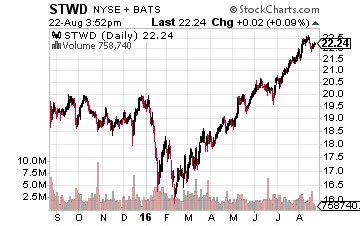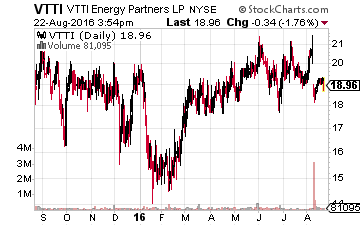In the latter days of July, I wrote several articles covering the historical fact that in recent years, August has been a rough month for stock market investors.
Fortunately, the market did not repeat history in the first half of this month, with several straight days of new record closes for the major market indexes. However, now in the last week of the August, the run of new records has taken a pause, and investors are worried where the market will go from here.
[ad#Google Adsense 336×280-IA]2016 has been an unpredictable year for investors, possibly even more so than in the past.
In January and February, we saw a pretty severe correction.
Typically, a new year comes with optimism about the market.
This year that optimism was quickly crushed as the market fell hard.
Then, in mid-February, just as the experts were forecasting more losses in 2016, the market took off on a six-month rally.
Investors have made 20% to 30% over the last six months, and these gains were in the face of a stalling economy and falling corporate profits. I am pretty sure that there were few pundits who predicted the early in the year correction or the market setting record highs six months later.
My point is that the market swings this year show that it is difficult –or impossible– to predict the intermediate turns in the market. We know there are bull markets, with the occasional bear market to remind us that nothing goes up forever. Market corrections inject the fear that we are in the next bear market, but six times out of seven it’s just a correction and stock prices soon again move higher.
If you are new to stock investing, a correction is a market decline of more than 10%. A bear market is when the major indexes drop by more than 20%, but most bear declines will be in the 30% to 50% range.
If you want to build wealth in the stock market, you need a strategy (or strategies) that will leave you better off financially through both the ups and the downs of the markets. I have researched a lot of different ways to build wealth through stock ownership (If you see me at this MoneyShow or a future event, I would be happy to talk about alternate strategies).
After that research, I chose a couple of dividend-focused strategies as my choices to make money in the stock market as it moves through its cycles. At its core, investing for dividends means you always own shares. That share ownership will provide you with a cash income stream that should grow over time.
Dividend stocks also let investors more easily ignore the fears in the market and buy shares when share prices are falling. Buying cheaper shares increases the yield on a dividend focused portfolio. In my different newsletters, I employ two core dividend stock investment strategies.
 Strategy one involves investing in higher yield stocks.
Strategy one involves investing in higher yield stocks.
I research high-yield stocks and recommend only those that can continue to pay their current dividends, and gradually increase them in time.
A couple of examples include Starwood Property Trust, Inc. (NYSE: STWD), a commercial mortgage finance REIT that yields 8.6% and Communications Sales & Leasing Inc. (Nasdaq: CSAL), a REIT that owns telecommunications infrastructure assets and yields 8.3%. With these stocks, an 8% average yield may very well beat the stock market indexes over the longer term in an economy that is growing at less than 2%.
 Strategy two is to buy income stocks that are growing their dividends at an above-average rate.
Strategy two is to buy income stocks that are growing their dividends at an above-average rate.
As the dividends grow, the share prices must eventually follow to keep yields in line with the rest of the market.
One example is VTTI Energy Partners LP (NYSE: VTTI), a company that owns energy products storage facilities in Europe, Asia, and North America.
My research shows that the VTTI dividend should continue to grow by 12% per year. The stock currently yields 6.7%. Extra Space Storage, Inc. (NYSE: EXR) is a REIT that acquires, owns, and operates self-storage facilities. Extra Space is growing its free cash flow and dividend by more than 20% per year. This type of growth has produced a 21% average annual return for EXR investors over the last 10 years. The stock yields 3.8%.
Sticking to the two strategies I mentioned briefly above has given me the best results over the long-term out of any other strategies that I have tried over my investing career. While they may not be the flashiest, get rich quick schemes peddled by many, following these strategies will incrementally increase wealth over many years no matter what the market does.
— Tim Plaehn
Sponsored Link: If you’re interested in consistently finding dividend stocks like the four above, you can join my community of readers who use a unique tool I have developed called the Monthly Dividend Paycheck Calendar. We’ve been using it for a few years now to deliver a steady stream of monthly income for investors from safe, high-yield stocks. And unlike what the scare mongers out there offer, my Monthly Dividend Paycheck Calendar offers you a real solution whether you’re just looking for extra income or trying to make up for lost time.
The Monthly Dividend Paycheck Calendar is set up to make sure you receive a minimum of 5 paychecks per month and in some months 8, 9, even 12 paychecks per month from stable, reliable stocks with high yields.
If you join my calendar by Thursday, August 25th you will have the opportunity to claim an extra $3,709 in dividend payouts by September.
The Calendar tells you when you need to own the stock, when to expect your next payout, and how much you can make from stable, low-risk stocks paying upwards of 12%, 13%, even 15% in the case of one of them. I’ve done all the research and hard work, you just have to pick the stocks and how much you want to get paid.
The next critical date is Thursday, August 25th (it’s closer than you think), so you’ll want to take action before that date to make sure you don’t miss out. This time, we’re gearing up for an extra $3,709 in payouts by September, but only if you’re on the list before August 25th. Click here to find out more about this unique, easy way of collecting monthly dividends.
Source: Investors Alley

